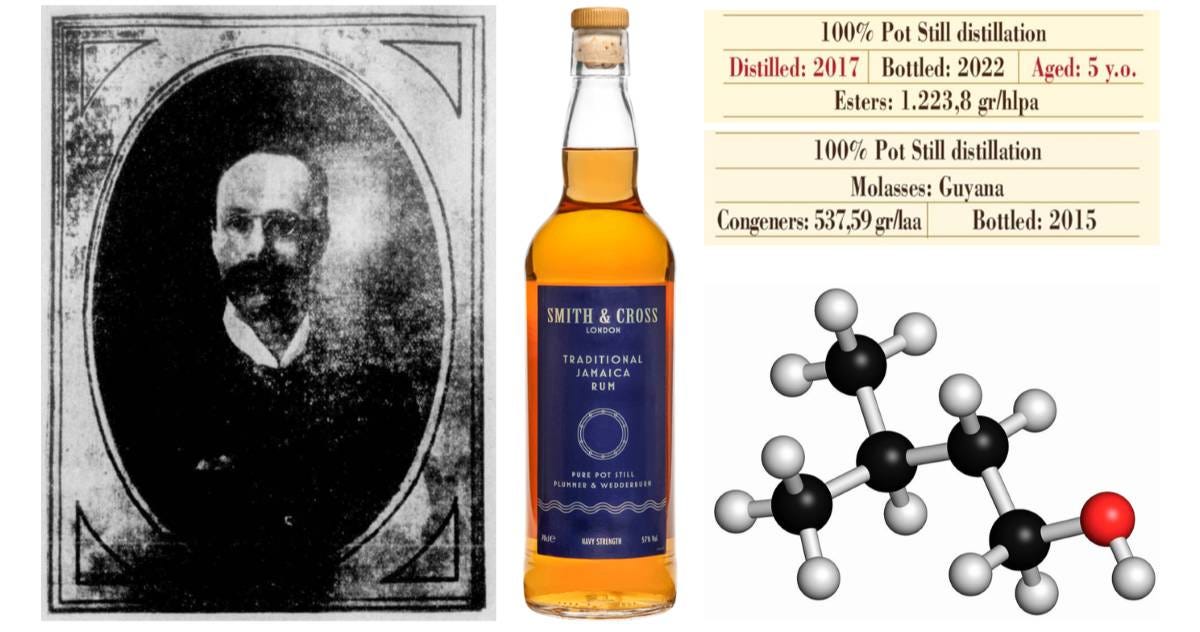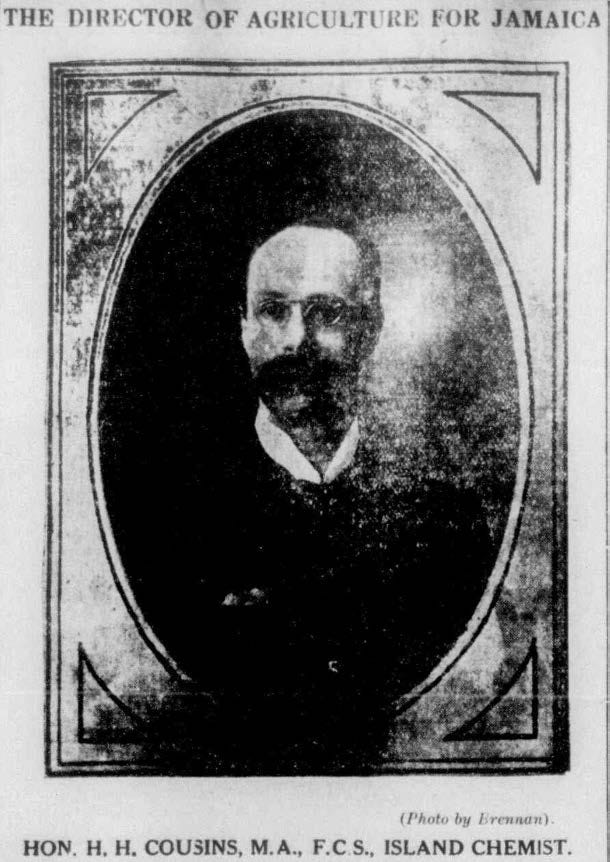It's Not All About Esters When It Comes to Rum
No phrase makes a rum geek’s heart beat faster than “high-ester rum.” The term refers to the ester content in a rum, where esters are organic compounds that contribute to a rum’s flavor and aroma. A high-ester rum evokes thoughts of a flavor bomb that hits you like a punch to the face—and you thank it afterward. Jamaica’s rums, redolent of overripe banana, pineapple, and solvent notes, are most frequently called “high-ester,” but true high-ester rums are also made in locales like Martinique, Barbados, Guyana, and Reunion Island.
There’s no formal definition of what constitutes a high-ester rum, but historically, Jamaica’s German rum, also known as Continental rum, serves as a reasonable benchmark. They were called this because they were sold to European blenders — mostly in Germany — who diluted them with neutral spirits to make rum verschnitt. Ten parts neutral spirit to one part German rum was a typical ratio. Trade practices of the era dictated that an ester level of 700 grams per hectoliter was the minimum to be designated a German or Continental rum. (We’ll get into this measurement below.)
Despite “high-ester” frequently appearing in articles and online discussions, true high-ester rums are relatively rare on liquor store shelves. To be clear, a cornucopia of extremely flavorful rums is available today, but their esters are often less than you might think. Somewhere along the line, “high-ester” and “highly flavored” became synonymous in the minds of many enthusiasts. The infographic accompanying this article highlights a particularly well-known rum often called high-ester but isn’t: Smith & Cross.
You may think I’m splitting hairs, but I will hold the line here. Playing fast and loose with objective facts when describing and teaching people about rum does a disservice to the category. If we seek to elevate and educate about rum, we should have our facts straight.
Let’s dig in.
Rum Flavor – A Brief Primer
Rum gets its aromas and flavor from hundreds of different molecules known as volatile organic compounds, abbreviated as VOC. This term frequently appears in what follows, so let’s dwell on them briefly.
Esters are one category of organic compounds formed when an organic acid molecule and an alcohol molecule bind together. There are dozens of different acids and alcohols, and each unique combination is a distinct type of ester. Ethyl acetate, formed by joining an acetic acid (“vinegar”) molecule with an ethyl alcohol molecule, is the most common ester found in rum. However, there are dozens of different esters in rum, each with its own aroma and flavor. One example is isomyl acetate, which is reminiscent of banana.
Ethyl acetate is 99% or more of the esters found in most rums, but it’s the least interesting ester from a flavor perspective. The legendary H.H. Cousins, who spearheaded Jamaica’s effort to create exceedingly high-ester rums in the early 1900s, wrote this in 1905:
By itself, Acetic Ether is of very small value as a rum flavour. It is so volatile that when exposed to the air for a few hours a glass of rum will lose the greater portion of its Acetic Ether. Again, when the rum is broken down with water the smell is almost entirely covered and the fragrance is lost.
An increase in the Acetic Ether content of a common clean or even a high-class rum, if not supported by an increase in the other Ethers in suitable proportion will not add to its intrinsic commercial value.
(Note: for our purposes, the ethers Cousins refers to are esters.)
Fortunately, Jamaica’s rum makers are adept at creating other types of esters, including ethyl butyrate, which smells of pineapple, and the previously noted isomyl acetate, which smells of banana. These esters are a minuscule fraction of the total esters present in a rum but play an outsized role when it comes to flavor.
Here’s the twist: Esters typically account for less than a third of a rum’s flavor compounds.
Beyond Esters
If esters are just one part of a larger picture, what else is there? To help frame what follows, let’s focus on the set of organic compounds defined in European Commission Regulation 2870/2000. They define a standard set of compounds (flavor molecules) to include when reporting on volatile organic compound levels. Laboratory analysis of distilled spirits typically uses this standard for reporting. Four categories of volatile organic compounds contribute to a VOC measurement:
Esters
Acids
Aldehydes
Higher Alcohols
Each compound’s quantity is expressed in gr/hlAA, an abbreviation for grams per hectoliter of absolute alcohol. This is a fancy way of saying, “How many grams are in 100 liters of the spirit if its water content is ignored.” When a rum’s ester level is discussed, its value is given in gr/hlAA.
A spirit’s volatile organic compound (VOC) value is the sum of its esters, acids, aldehydes, and higher alcohol measurements. For example:
Esters: 100 gr/hlAA
Acids: 40 gr/hlAA
Aldehydes: 20 gr/hlAA
Higher alcohols: 250 gr/hlAA
The sum of the above is 410 gr/hlAA. Of particular interest here are the higher alcohols, which are usually the largest part of a rum’s VOC measurement. What flavors do they contribute? Here are a few higher alcohols to consider:
Isoamyl Alcohol – Fruity, banana, solvent-like
Isobutanol – Oily, slightly sweet, solvent- and whiskey-like
Propanol (n-propanol) – Alcoholic, slightly floral
Butanol (n-butanol, isobutanol) – Sweet, alcoholic, banana-like, herbaceous
Phenylethanol – Roses, slightly sweet, floral
A rum’s ester level is always lower than its VOC level, as esters are just one component of the VOC measurement. To use a musical analogy, an ester value is how loud the bass player is, while the VOC value is the volume of the entire band.
Running the Numbers
Having seen many lab analyses of different rums, I can say that higher alcohols are often the band’s loudest member, especially with highly flavorful rums. Jamaica rums are particularly good examples. Much of the signature Jamaican “funk” in rums like Smith & Cross or Rum Fire comes from their higher alcohol component. The accompanying infographic above shows an analysis of Smith & Cross from 2018. The higher alcohols are 441 gr/hlAA, 69% of the VOC level of 635 gr/hlAA!
Another popular unaged Jamaican overproof rum has an ester level of just 51 gr/hlAA but higher alcohols of 392 gr/hlAA. Its esters contribute less than 11 percent of the rum’s total VOC of 475 gr/hlAA.
Both of these rums are frequently mentioned in the same breath as “high-ester.” But while they are intensely flavored, they have less than 10% of the esters of rums like TECC (Long Pond), DOK (Hampden), and NYE/WK (New Yarmouth), all of which clock in at 1600 gr/hlAA. True high-ester rums like DOK and TECC were never intended to be consumed by themselves. Rather, they’re made to blend with lighter rums. While Smith & Cross almost certainly contains some high-ester rum, it is not a high-ester rum itself.
The presence of far more higher alcohols than esters isn’t limited to Jamaican rums. One lab analysis of a well-known and highly flavorful Demerara rum has the following VOC components:
Esters: 35 gr/hlAA
Acids: 17 gr/hlAA
Aldehydes: 24 gr/hlAA
Higher alcohols: 96 gr/hlAA
Total VOC: 172 gr/hlAA
Again, higher alcohols are over half of the total VOC, and esters are only 20% of the total.
A few brands now include VOC measurements on their labels. Planteray is arguably the most forthcoming in this regard, with the VOC value of most recent releases appearing on the label and/or the technical sheet on the brand’s website.
Velier also has lab analysis data on certain labels but is inconsistent with which metric it shows. Sometimes, they show esters; other times, they show volatile organic compounds, which they call “congeners.”

Wrap Up
Yes, this all is a bit geeky for some people. However, as anyone who seeks a deep understanding of rum knows, their knowledge is just an approximation of reality. As we learn more, our understanding becomes more refined. Knowing about esters and ester levels is a reasonable first step. The next step is to understand the bigger picture of flavor compounds, where esters are just one part of the overall equation.
For a deeper dive into the topic, chapter 10 of Modern Caribbean Rum, as well as this article:
What I’ve shared here is intended for enthusiasts rather than a rigorous scientific discussion. With that in mind, here are some disclaimers:
Our palate’s sensitivity to a particular organic compound isn’t linear, and the perceived aroma/flavor can change as the concentration changes. What smells pleasant at one concentration may be unpleasant at higher concentrations.
The detection threshold for a given organic compound varies from person to person.
Rum blends can and do change over time. Analysis data, as presented above, is just a snapshot in time and may not correlate with the same expression on the shelf today.









We should remember about C13 norisoprenoids. We can take water, add ethyl alcohol and all these esters, aldehydes and higher alcohols. But we will not get anything like rum.
Great info!